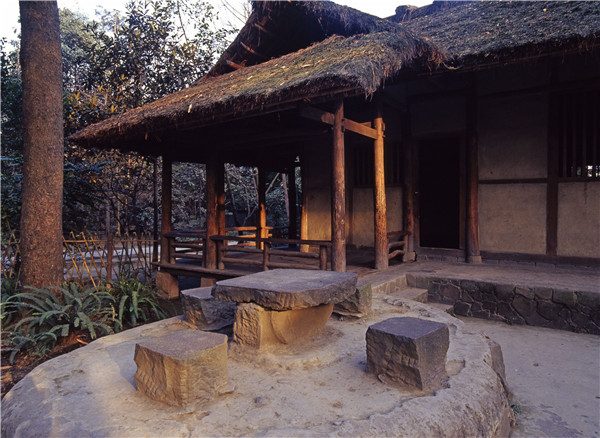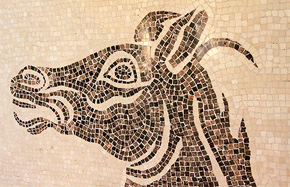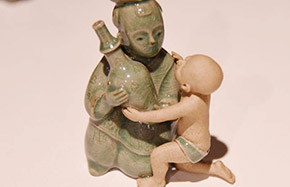Literary attraction
His poems are known for compassionate portrayals of human suffering and indignation in the face of injustice and corruption.
After a storm destroyed the structure's roof in 761, he began to ponder the fate of other impoverished scholars.
He wrote prose declaring he could die content in his rustic abode if the less fortunate found shelter.
This, among other works he wrote in the cottage, is included in school textbooks.
His cottage was destroyed in the late Tang Dynasty.
Another poet, Wei Zhuang, discovered its ruins and built a new cottage on the site in 902. It has since undergone about a dozen major renovations.
The museum consists of several structures, including the Poetic History Hall, the Shrine of Gongbu (Du Fu's official title), the Memorial Hall of Du Fu and a replica of Du's cottage built in 1997, according to the description of his writings.
Couplets citing his prose about life, character and literature grace gates, pillars and halls.
Visitors can also enjoy the aura of ancient culture among the tranquility of bamboo groves.
An annual celebration is staged at the museum to honor the literary luminary.
- Technicians restore original forms of historical relics in Anhui Museum
- China's famed Terracotta Warriors to awe museum-goers in select US states
- Tibet Museum goes into renovation, will reopen in 2020
- Two treasures from Shanghai Museum exhibited at Athens Acropolis Museum
- Ancient bronzewares displayed at Sanxingdui Museum


















